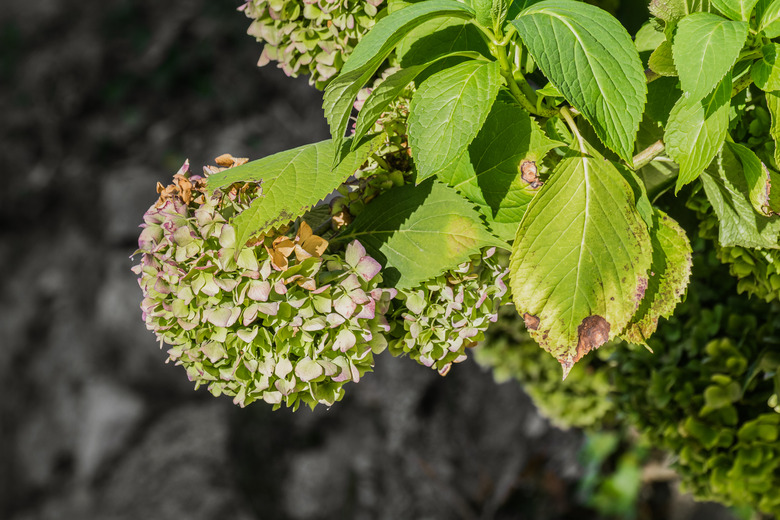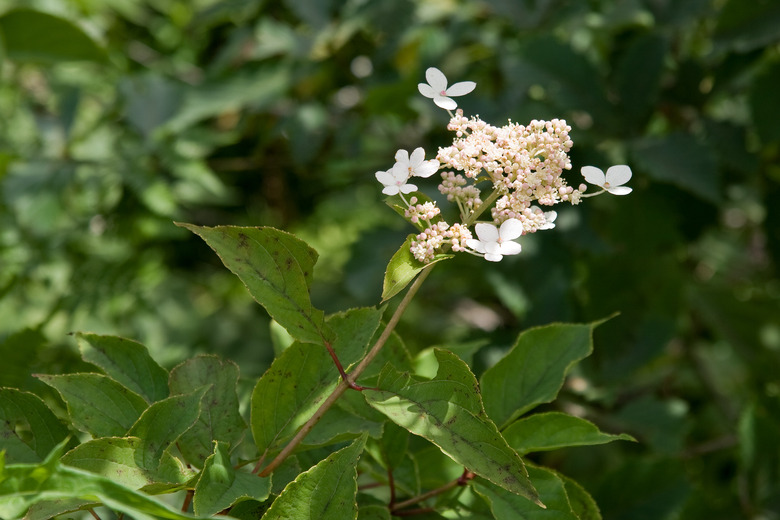How To Propagate A Hydrangea Paniculata
Stem cuttings provide the most reliable method of propagating hydrangeas, including common species such as the panicle or pee-gee hydrangea. The panicle hydrangea (Hydrangea paniculata) grows best in USDA plant hardiness zones 4a to 8b, where it is prized for its showy flowers and tidy, upright growth habit.
Cutting-propagated panicle hydrangeas grow quickly and will produce a few flowers the year after rooting, but it will take several years for the shrub to reach maximum blooming.
Gathering Panicle Hydrangea Cuttings
Gathering the right type of cutting at the right time of year makes a difference when it comes to propagating panicle hydrangea cuttings at home. Panicle hydrangeas root best from **softwood cuttings,** so it is ideal to gather the cuttings in spring after the shrub shows new growth.
- Gather a 5- to 6-inch-long cutting from the tip of a new branch. Look for a cutting with a pliant green stem and some small new leaves at the tip. Avoid stems with flower buds.
- Sever the cutting just below a set of leaves using a utility knife that has been wiped down with household disinfectant to kill off any pathogens. Make the cut at a slight angle.
- Wrap the cuttings in moist paper towel or newspaper so that they don't dry out while you prepare rooting pots.
Tip
Gather hydrangea cuttings in the morning when the weather is cool and moist and the plant is fully hydrated.
Potting Panicle Hydrangea Cuttings
The easiest way of rooting panicle hydrangea cuttings is to prepare a separate pot for each cutting instead of potting up multiple cuttings in each pot. Use 1-gallon nursery pots with multiple drainage holes at the base and a sterile, porous potting mixture of 1/2 perlite and 1/2 sand.
1. Remove all of the leaves from along the lower half of the cutting to expose the nodes, which is where the roots will form. 2. Remove 2/3 of all the leaves from each cutting and cut in half any large leaves that remain. This will help limit moisture loss in the cutting as it roots. 3. Stick the bottom half of the cutting into the potting mixture so that the bottom set of leaves is just above the surface. Press the mixture against the stem to increase contact between the stem and the soil.
Tip
Optionally, dip the cuttings in rooting hormone before potting them to improve and accelerate rooting.
Rooting Panicle Hydrangea Cuttings
Warmth, light and moisture all play a role in rooting cuttings. Although panicle hydrangea cuttings root eagerly without any special coddling, providing the right conditions will help the process go more quickly and easily.
Warning
Do not root cuttings taken from trademarked or patented plants—these are protected by law and cannot be propagated without permission.
**Warmth:** Warm conditions promote better rooting in softwood cuttings. Rooting your cuttings indoors will help keep the cuttings warm, but a sheltered location outdoors can also provide the right conditions.
If temperatures are very chilly, consider setting the pots on a propagation mat to warm the soil mixture.
**Light:** Panicle hydrangeas need bright light to successfully root but direct sunlight can cause the cuttings to wilt or dry out before they root. Choose a rooting location with bright, indirect sunlight such as indoors near a lightly shaded window or outdoors under a sheltered porch.
**Moisture:** Create a mini-greenhouse by sticking a barbecue skewer into the soil on either side of the cutting and covering the pot with a large, clear plastic bag so that it rests against the skewers, not the cutting. Cut a 1-inch slit into the plastic to release excess moisture.
Keep the potting mixture moist and the cutting will root in two to eight weeks.
Tug on the cutting very gently to determine if it is "stuck" by its developing roots, then transplant it into a container filled with potting soil once the roots grow to 1/2-inch in length. Grow the rooted cutting under nursery conditions and transplant it into the garden the following year.

